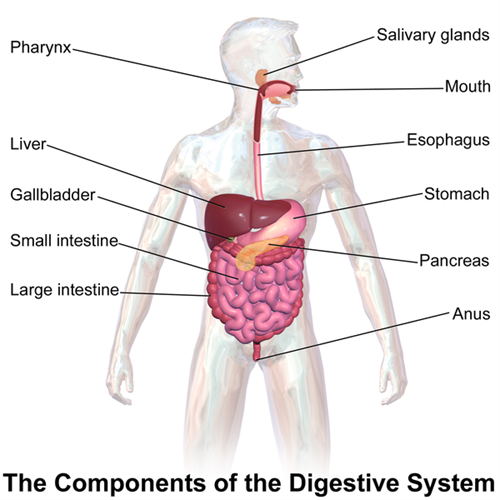PDF chapter test TRY NOW
What is digestion?
Food ingested by the animals is complex. Food consists mainly of complex insoluble substances like carbohydrates, proteins and fats. The body cannot use the food in the complex form. Solid food is thus converted into simple and soluble form before the body utilises it.
Digestion is converting complex or large or complex food substances (polymers) into smaller parts (monomer) that the body can absorb and stores in the tissues.

Breaking down of complex substance to simpler substances
During digestion,
- The complex carbohydrate present in food is broken down into glucose
- Fats are broken into fatty acids and glycerol
- Proteins are broken down into amino acids .
Digestion in humans
Ingestion in humans is through the mouth. We chew the food with the teeth and break it down mechanically into small pieces. The food passes through a long, continuous canal running down from the buccal cavity to the anus. This canal can be divided into six compartments:
- Buccal cavity
- Oesophagus or food pipe
- Stomach
- Small intestine
- Large intestine
- Rectum and Anus
All these parts together form the alimentary canal, otherwise known as the digestive tract. The alimentary canal is the site where digestion and absorption of food takes place. The digestive tract, along with the associated glands, together comprise the digestive system.
The glands that are associated with the digestive system include salivary glands, the liver and the pancreas. Salivary glands are present in our buccal cavity. The liver is situated in the upper part of the abdomen on the right side. The pancreas is a gland which is located below the stomach.

Reference:
https://commons.wikimedia.org/wiki/File:Blausen_0316_DigestiveSystem.png
